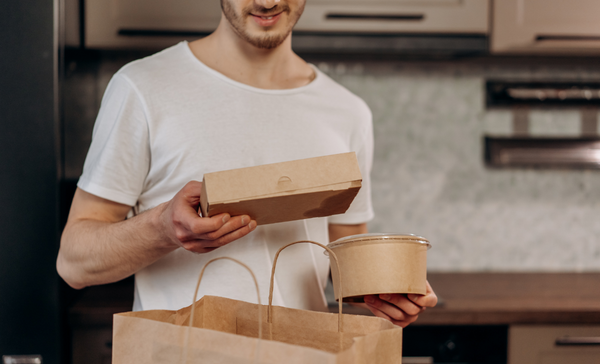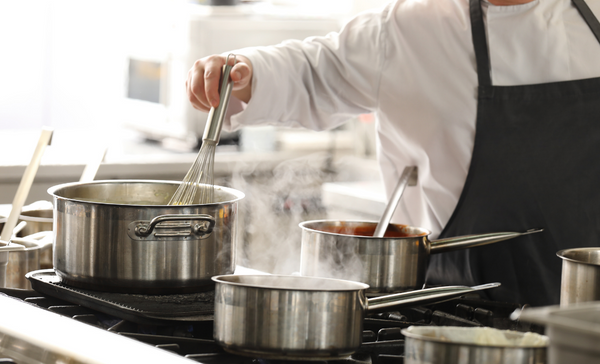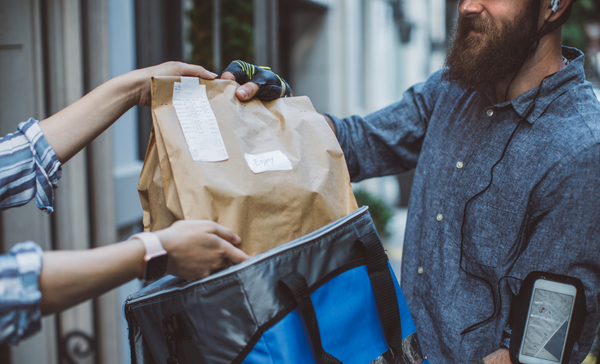Even before the pandemic, food home delivery was a phenomenon on the rise, and its demand has increased both during and after it. To implement delivery into your establishment, a large infrastructure is not necessary and you only need to implement a few minimal changes, with which you can increase the turnover of the premises by up to 30%. The goal is to offer the same as the premises, reaching the widest audience possible with an efficient logistics service for home delivery.
What aspects do you have to take into account before implementing the delivery?*
- Operational. Bear in mind that you need to allocate a specific space for managing orders that does not interfere with the operation of the premises. This avoids paths being crossed and allows access from the outside without disturbing the local clientèle. You will also have to take into account a stock increase. On the other hand, with regard to the workforce, it is anticipated that this will require one person to take the orders (or digitise this process) and one person to prepare them. In terms of delivering the orders, you can choose to provide your own delivery or use third-party services. Readapt the workforce and adjust the schedules. Bear in mind that delivery stops being attractive when it is not fast, so the process (from the moment the order is received until it is delivered) must be as fast as possible. To do this, calculate times and design delivery routes.
- Packaging, prioritising sustainability and branding. Look for a supplier of quality packaging, preferably sustainable, BIO, eco-friendly plastics, etc. Create a uniform line according to the food it will contain. Bear in mind that food delivery has become an excellent marketing platform, so good packaging is a key marketing element.
- Digital sales channel. There are multiple sales channels, from aggregators (Just Eat, Glovo or Uber Eats, among others), which make their logistics available to you but bring with it some inconveniences (commission, loss of customer data or cold customer service). On the other hand, you can opt to have your own channel, such as a website or social media page, including order and payment management, if you are looking for a more technological option. If, on the contrary, you are looking for a simpler solution, you can use WhatsApp Business.
- Loyalty. Delivery will allow you to identify and get to know customers and what they order. With the right know-how, you will be able to surprise your customers and retain them with a lower investment cost.
- Offer, designed with identity, quality and, of course, always focusing on food safety. Include the most successful dishes that can be packaged and transported, even creating new options (respecting your identity, quality and safety). As well as the new protocols established to prevent the spread of COVID-19, you will have to apply adjustments to guarantee food safety, as the consumer must have the maximum guarantees that their order has been handled with the most rigorous protection.

With regard to the equipment required to implement delivery at your catering business, the first thing to do is determine what foods you are going to work with and how you will store them for their preservation. At Fagor Professional, we have an extensive catalogue of solutions so that your business can easily implement home deliveries.
Taking into account the evolution of cooking techniques and material, food can be classified into several ranges, ranging from I to V:
Range I: foods that have not been transformed and have not undergone any sterilising treatment. They are risky and highly perishable foods.
Range II: foods that have been subjected to heat treatment and have been packaged in airtight containers for preservation, so they are no longer fresh foods.
Range III: foods preserved by the cold (frozen or deep-frozen). It is essential that the cold chain is not broken during transportation and they must be defrosted before cooked.
Range IV: clean fresh fruit and vegetables, chopped and packaged for consumption. They maintain their natural properties, but they are already washed, chopped and packaged, with an expiration date of 7 to 10 days. They have multiple advantages, such as their high quality; they are very safe as they are washed, disinfected to prevent microbial attack and cooled to maintain quality; they maintain their fresh character and properties; their packaging in a modified atmosphere protects them from oxidation; they facilitate consumption and simple handling; moreover, there are many options for the packaging and presentation of the product.

Range V: foods that have been processed, partially prepared for their consumption and are preserved in a protective atmosphere. They still need a bit of preparation before being consumed. They have multiple advantages, due to their prior processing and subsequent cooling, they provide a product ready for consumption in a short time; to do this, two techniques can be used: Cook and Chill or Sous-vide Cooking; as the products are subjected to high cooking temperatures, the elimination of possible pathogenic organisms is guaranteed and the subsequent quick cooling facilitates preservation. They are safe products, with intact characteristics and have multiple benefits: quality produce, variety of gastronomic offer without the need for more staff, time to develop other activities, reduced food contamination risk, optimisation in the flows of opening, regenerating and serving.
When working with foods from ranges IV and V, it is necessary to follow a production process and flow in which Fagor Professional equipment is a great ally.
We hope that this information has been of interest to you, and of course for any clarification on this or other topics, do not hesitate to contact us.



Follow us